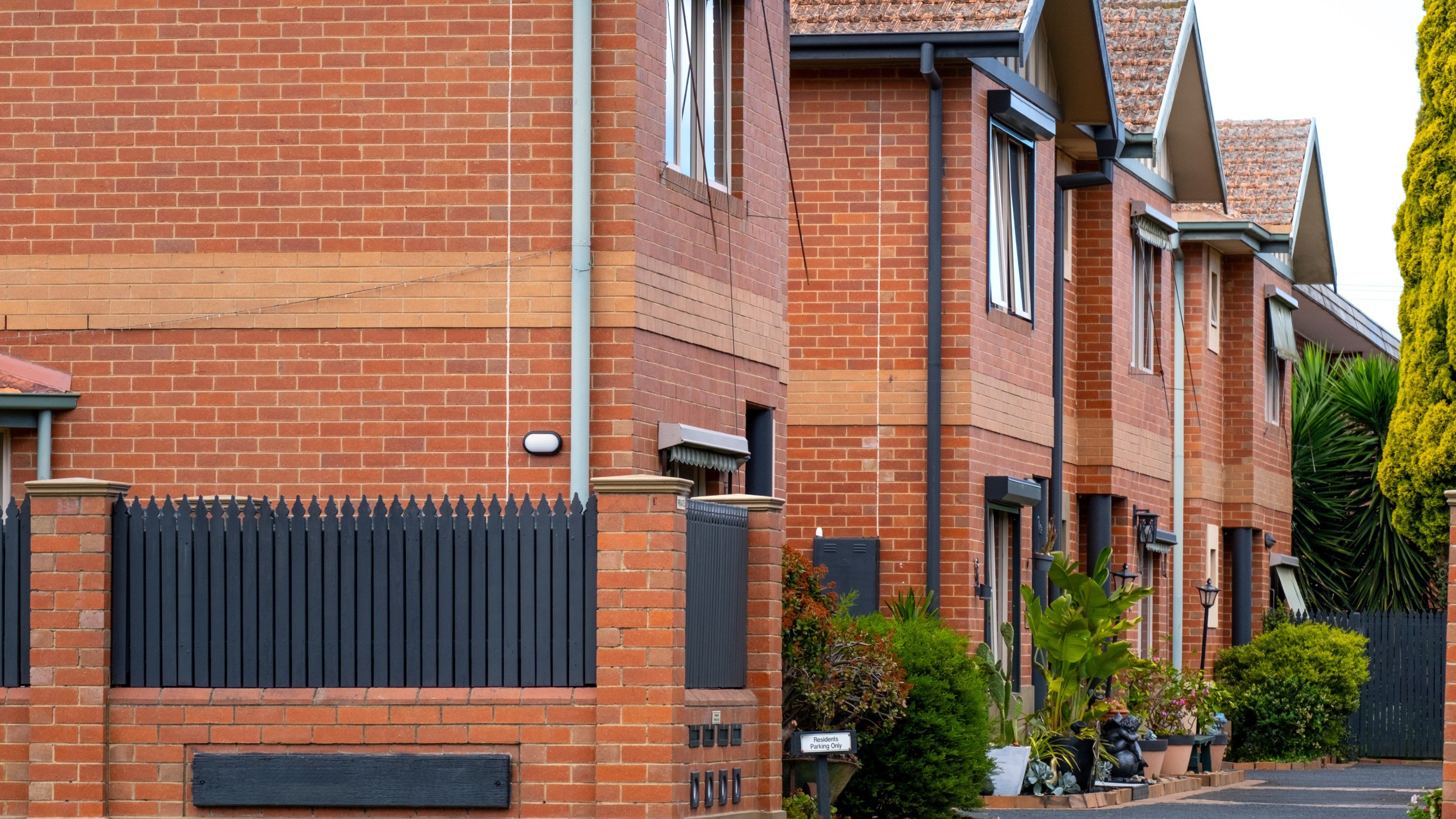Many Victorian lot owners are caught off guard when they learn the full extent of the financial commitments that come with owners corporation living. While many assume the annual levies are the only ongoing expense, the reality is far broader — with insurance excesses, emergency repairs, and unexpected costs that can quickly derail a budget if you're not financially prepared.
Understanding the full financial picture of owners corporation living is essential — whether you're already an owner or considering buying into one. In today's market, it's easy to be enticed by properties advertising low levies, but these can often mask deferred maintenance that later results in massive special levies. Many buyers also assume that because the owners corporation covers building insurance, it will automatically pay any excess on claims. In reality, if a claim affects only your lot, you're often responsible for paying the excess yourself and these costs can be substantial.
Even common property repairs can come with unexpected bills, depending on boundary lines and legal responsibilities. That's where we come in. This article is to help make these obligations clear from the start, guide you through potential risks, and help you plan so you're never blindsided by surprise costs. With a transparent approach, you'll have the confidence of knowing exactly what you're signing up for and the peace of mind that your investment is protected.
What This Guide Covers

Regular Costs: What Your Levies Actually Cover
Understanding what your regular levies pay for helps you appreciate why additional costs arise. Your levies typically fund:
Administrative Costs
- Strata management fees: Professional management services
- Annual audit fees: Required financial audits
- Meeting expenses: AGM venues and documentation
- Banking and accounting: Financial administration
Insurance Premiums
- Building insurance: The largest single expense for most buildings
- Public liability: Protection against injury claims
- Office bearers liability: Coverage for committee members
- Workers compensation: For any employed staff
Utilities and Services
- Common area electricity: Lighting, lifts, security systems
- Water for common areas: Gardens, cleaning, pools
- Waste management: Garbage collection and recycling
- Essential services: Fire safety, emergency lighting checks
Regular Maintenance
- Cleaning contracts: Common areas and windows
- Garden maintenance: Lawns, plants, and trees
- Minor repairs: Day-to-day maintenance issues
- Preventive maintenance: Gutter cleaning, pest control
💡 Reality Check: The Two-Fund System
Victorian strata schemes must maintain two funds:
- Administration Fund: For day-to-day expenses
- Maintenance Fund: For future major works
If the maintenance fund is underfunded, expect special levies when major works arise.
Special Levies: The Budget Breakers
Special levies are additional charges raised for expenses not covered by regular levies. They're often the biggest financial shock for strata owners.
Common Triggers for Special Levies
Major Building Works
- Roof replacement: $50,000-$200,000 total cost
- Lift replacement: $80,000-$150,000 per lift
- Façade repairs: $100,000-$500,000+
- Painting programs: $30,000-$100,000
Real Example: A 20-unit building in Box Hill faced a $120,000 roof replacement. Each owner paid a $6,000 special levy.
Emergency Repairs
- Storm damage not covered by insurance
- Plumbing failures affecting multiple units
- Structural issues requiring immediate attention
- Fire damage (paying insurance excess)
Legal Costs
- Disputes with contractors or suppliers
- Debt recovery from non-paying owners
- Building defect claims
- Compliance issues with authorities
How Special Levies Are Calculated
Special levies are divided among owners based on:
- Lot entitlement: Your share of the total property
- Unit entitlement: May differ from lot size
- Equal shares: Rarely, costs split equally
Example Calculation
Total special levy needed: $60,000
Your lot entitlement: 10%
Your share: $6,000
Payment options typically include:
- Lump sum (sometimes with early payment discount)
- Instalments over 3-12 months
- Added to regular levies
⚠️ Warning: Non-payment of special levies can result in legal action, interest charges, and even forced sale of your property. They're not optional.
Insurance Excesses and Hidden Premiums
Insurance-related costs catch many owners off-guard. Beyond the premiums hidden in your levies, you face potential excess payments and coverage gaps.
When You Pay the Insurance Excess
Even with owners corporation insurance, you often pay the excess ($1,000-$10,000) when:
- Damage originates from your lot
- You or your tenants caused the incident
- Claims relate to your lot specifically
- Water damage from your appliances
Case Study: The Burst Pipe Nightmare
James's hot water system burst while on holiday, causing $45,000 damage to three units below.
- Building repairs: Covered by OC insurance
- Insurance excess: $5,000 paid by James
- Contents damage: Each owner claimed separately
- James's contents: Not covered (no contents insurance)
- Total cost to James: $5,000 excess + $8,000 contents = $13,000
Rising Insurance Premiums
Strata insurance costs have increased 15-30% annually in recent years due to:
- Increased natural disasters and claims
- Cladding and building defect concerns
- Rising construction costs
- Fewer insurers in the market
These increases flow directly to your levies, often causing significant annual increases.
Insurance Gaps That Cost You
The owners corporation policy doesn't cover:
- Your contents: Furniture, belongings, electronics
- Temporary accommodation: If your unit is uninhabitable
- Loss of rent: For investment properties
- Your renovations: Kitchen upgrades, floor improvements
- Legal liability: For incidents you cause
💰 Essential Protection
Always maintain your own insurance:
- Owner-occupiers: Contents insurance minimum
- Landlords: Landlord insurance including loss of rent
- All owners: Consider liability coverage
Unexpected Maintenance Costs
Even with clear rules about owner versus owners corporation responsibilities, maintenance costs can surprise you.
Your Hidden Maintenance Obligations
Air Conditioning Units
- Annual servicing: $150-$300
- Filter replacements: $50-$100
- Major repairs: $500-$2,000
- Replacement: $2,000-$5,000
Even if the unit came with your property, you're responsible for all costs.
Hot Water Systems
- Annual service: $150-$250
- Valve replacements: $300-$500
- System replacement: $1,500-$3,000
- Emergency callouts: $200-$500
Internal Plumbing
- Blocked drains (your section): $200-$500
- Tap washers and cartridges: $150-$300
- Toilet repairs: $200-$600
- Shower screen replacement: $500-$1,500
Consequential Damage Costs
When maintenance issues cause broader damage:
- Your leak damages common property: You pay for repairs
- Common property issue damages your lot: Complex liability
- Delayed maintenance causes problems: Increased costs
🔧 Prevention Saves Money
Annual maintenance costs to budget for:
- Appliance servicing: $500-$800
- Plumbing checks: $200-$300
- Pest inspections: $150-$250
- Emergency fund: $1,000-$2,000
Total: $1,850-$3,350 per year
Compliance and Legal Expenses
Regulatory compliance and legal issues generate costs that many owners don't anticipate.
Building Compliance Requirements
- Fire safety inspections: Annual essential services
- Pool compliance: Safety barriers and inspections
- Balcony inspections: Structural assessments
- Asbestos management: If present in older buildings
Legal Costs You Might Face
Individual Legal Expenses
- Renovation approvals: Legal advice $500-$2,000
- Disputes with OC: Your own legal costs
- By-law breaches: Defense costs if challenged
- Debt recovery: If you fall behind on levies
Shared Legal Costs (via levies)
- Debt collection: Chasing other owners
- Contract disputes: With service providers
- Building defects: Claims against developers
- Compliance issues: Council or authority matters
Note: Even if you disagree with legal action, you share the costs through your levies if the owners corporation proceeds.
Hidden Costs When Buying Strata
The purchase price is just the start. Budget for these additional costs when buying into strata:
Pre-Purchase Costs
- Strata inspection report: $300-$600
- Building inspection: $400-$800
- Additional strata searches: $150-$300
- Legal review of rules: $500-$1,000
Settlement Surprises
- Levy adjustments: Pro-rata payments
- Special levies already passed: Your liability from day one
- Owners corporation certificates: $100-$200
- New owner notifications: Administrative fees
First Year Shock Costs
- Insurance not included in levies: Contents/landlord cover
- Utility connections: If separately metered
- Parking permits: In some complexes
- Access devices: Additional keys/fobs $50-$200 each
Real Buyer's Experience
Sarah bought a $550,000 apartment with $800 quarterly levies. Her first-year extras:
- Special levy (passed before purchase): $3,000
- Contents insurance: $800
- Hot water system repair: $600
- Extra car park fob: $150
- Levy increase at AGM: $150/quarter
Total unexpected costs: $4,700 + $600 ongoing
How to Budget for Strata Living
Realistic budgeting prevents financial stress. Here's how to plan for all strata costs:
The Complete Strata Budget
Annual Budget Worksheet
Building Your Emergency Fund
Aim to save:
- Minimum: 3 months of levies + insurance excess
- Recommended: 6 months of levies + $5,000
- Ideal: 12 months of levies + $10,000
Smart Saving Strategies
- Automate savings: Set aside 20% above your levies
- Build gradually: Start with $50-$100 per week
- Use offset accounts: Earn interest while staying liquid
- Review annually: Adjust for levy increases
Success Story
Mark automated $100 weekly savings when he bought his unit. After three years, his $15,600 fund covered:
- A $4,000 special levy (roof repairs)
- $2,500 hot water system replacement
- $1,000 insurance excess (storm damage)
Without stress or credit card debt!
Red Flags: Signs of Future Cost Bombs
Learn to spot warning signs of significant future expenses:
In the Financial Statements]
- 🚩Maintenance fund below one year's levies
- 🚩 History of frequent special levies
- 🚩 Deferred maintenance noted in reports
- 🚩 High percentage of unpaid levies
- 🚩 No recent major works despite building age
In the Building
- 🚩 Original lifts in buildings over 25 years old
- 🚩 Concrete cancer or façade issues
- 🚩 Original plumbing in 1960s-70s buildings
- 🚩 Flat roofs with ponding water
- 🚩 Cladding that may not meet current standards
In the Management
- 🚩 No long-term maintenance plan
- 🚩 Frequent strata manager changes
- 🚩 Minimal meeting attendance
- 🚩 Reactive rather than proactive maintenance
- 🚩 No professional building assessments
Due Diligence Checklist
Before buying, always check:
- ☐ 5 years of financial statements
- ☐ Meeting minutes for planned works
- ☐ Building condition reports
- ☐ Insurance claims history
- ☐ Capital works plan
- ☐ Current disputes or legal issues
True Cost Comparison: House vs Strata
Understanding how strata costs compare to house ownership helps set realistic expectations:
Key Insight: While strata levies seem high, they often include services that house owners pay for separately. The real difference is the lack of control and potential for special levies.
Taking Control of Your Strata Finances
Knowledge is power when it comes to strata costs. Now that you understand the full financial picture:
- Review your current budget against our comprehensive list
- Start building your emergency fund if you haven't already
- Get involved in your owners corporation to influence financial decisions
- Maintain proper insurance to protect against gaps
- Plan for the long term with realistic expectations
The Bottom Line
Strata living can be financially manageable when you:
- ✓ Understand all potential costs
- ✓ Budget comprehensively
- ✓ Maintain adequate reserves
- ✓ Stay informed about your building
- ✓ Get professional help when needed


